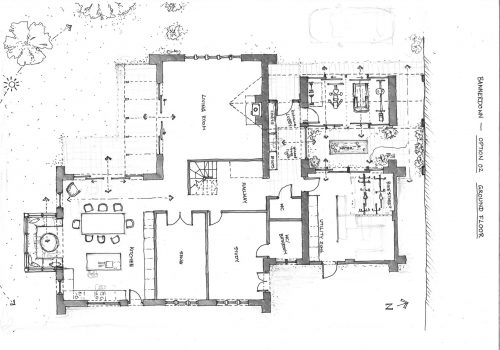The project delivery method, also known as the construction delivery method, defines how the parties involved in a building project will be organized, establishing the hierarchy, risk allocation, and timing of involvement for each party. As each project is unique, the approach to its completion should also be tailored accordingly.
There are five primary project delivery methods, with potential variations within each. Typically, the owner decides which method they want to use for their project. However, as an architect submitting a proposal, if you believe a different method would better serve the client, communicate the advantages of the new approach instead of focusing on the drawbacks of their original choice. Demonstrating your commitment to their project needs may influence them to select you as the architect. The five main methods are:
Project Delivery Methods:
1. Design Bid Build:
Design Bid Build is the traditional and most widely used model. It involves three distinct phases: design, bidding, and construction. The owner initially contracts with the architect to complete the design, during which the architect acts as both a vendor (providing the design product) and an agent (consulting with the owner). After completing the design documents, the owner solicits bids from contractors. Once a contractor is selected, the owner forms a separate contract with them, and the architect transitions to an agent role, providing oversight during construction on behalf of the owner.
Advantages:
– Clear step-by-step process
– Lower project costs due to a fully completed design before construction
– Familiarity and widespread use
When to use Design Bid Build:
– For straightforward projects with a limited budget and schedule (common for most projects).

2. Design Build:
Design Build is the second most common delivery method. In this approach, the owner has a single contract with a team or firm that handles all aspects of the project, from design to construction. This can be either a firm capable of handling the entire project or a team of firms collaborating together. Architects working with construction companies on Design Build projects often operate under a joint contract.
Advantages:
– Faster project delivery due to design and construction overlap
– Reduced change orders and quick resolution of design issues with close collaboration between architect and contractor
– Streamlined communication and decision-making
When to use Design Build:
– For straightforward projects with a limited schedule where the owner can clearly communicate their needs and trust the team.
3. Multi-Prime:
Multi-Prime delivery method shares similarities with Design Bid Build but involves the owner taking on the role of the general contractor. The owner contracts separately with multiple main contractors (primes), including the architect and subcontractors. Each prime is responsible for their scope of work.
Advantages:
– Maximum control for the owner in the project organization and management
– Suitable for public entity projects where competitive bidding is mandatory
When to use Multi-Prime:
– When the owner is experienced and capable of managing the entire project.
4. Construction Management at Risk:
With Construction Management at Risk, the owner hires a construction manager (CM) who takes on the risk during the construction phase after initially acting as an agent during the design phase. The CM commits to completion dates and pricing promises.
Advantages:
– Early involvement of the builder during the design phase to optimize constructability and reduce costs
– Clear completion date and fixed price commitment by the CM
When to use Construction Management at Risk:
– When the owner desires a fixed completion date and price and is responsible for ensuring design completeness and accuracy.
5. Integrated Project Delivery (IPD):
Integrated Project Delivery is a relatively new method where the owner, architect, and contractor are selected before any work begins. They collaborate to define project goals and specifics, entering into a joint contract where they share risks and rewards.
Advantages:
– Efficient and collaborative approach leading to minimized risks and delays
– Early involvement of the contractor in design decisions, optimizing constructability
When to use Integrated Project Delivery:
– For projects with undefined scope and significant coordination requirements
– For projects under tight schedules where collaboration is crucial
ConCLusion
Understanding the different project delivery methods is essential for architects in providing clients with the most suitable and efficient approach for their projects. Each method has its advantages and ideal scenarios, and architects can play a crucial role in guiding clients toward selecting the best-fit delivery method for their unique needs and objectives.






